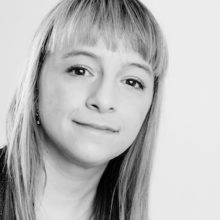
Robohub.org
Building topological maps to get around
Service robots entering our homes will need to map their environment and figure out their location as they move around. Previous articles discussed Self-Localization And Mapping (SLAM) approaches that give accurate measurements regarding the location of the robot and objects in the environment. Such so called “metric” approaches can be useful for robot tasks that require high accuracy, such as placing a cup in an exact location.
Instead, the “topological” approach represents the environment as places (nodes) and paths between places as edges. Robots can localize by finding the node where they are currently positioned. The advantage of this approach is that large amounts of data can be stored as nodes and edges and noisy sensors can be used to grossly map the environment. Furthermore, for human robot interactions it is sometimes more useful for the robot to know in what room it is (e.g. kitchen node) rather than a cartesian coordinate.
Following this idea, Choi et al. present a method for autonomous topological modeling and localization in home environments using only low-cost sonar sensors. Experiments were conducted using a Pioneer 3-DX differential drive robot (see picture below) equipped with 12 Murata MA40B8 sonar sensors in a 11.4 m × 8.7 m home environment of several rooms containing items of furniture.

As a first step, the robot was manually guided along an arbitrary path at an average speed of about 0.15 m/s while acquiring sensor data at a rate of 4 Hz. Based on the sonar data, the robot marks a grid map with regions that have obstacles and those that don’t. The grid map is then partitioned into several convex subregions that represent the nodes in the environment. The result is a topological map as can be seen below. As a second experiment, the robot is again guided through the environment and asked to identify its node location, even in situations where furniture has been moved around. Results show that the proposed method provides reliable modeling and localization using sparse and noisy sonar data.

Experimental results of the autonomous topological modeling process: autonomous subregion extractions (each subregion is a different color) and the corresponding topological models.
Although the proposed method was developed for sonar sensors, it can also be applied to any type of sensor that generates grid maps (e.g., laser range finders or stereo vision sensors).




